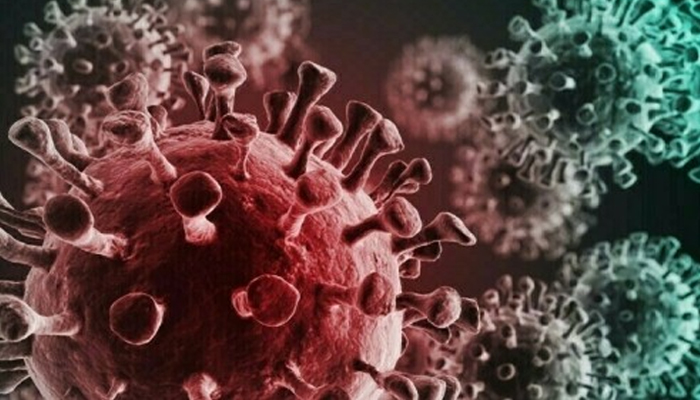By the end of the 19th century, with the help of the researches of John Snow, Louis Pasteur and Robert Koch and others, conclusive evidence against the ancient Greek theories of disease transmission (miasma, etc.) It was realized that there is no effective medicine or treatment available against these little invisible killers. It was a time when there was only one way to avoid infectious diseases and that was to follow the basic principles of hygiene and sanitation. They were not ready to make concessions. In such a case, the next destination of our journey is the origin of the concept of antiseptic medicine.Antibiotic medicine is a common thing for us nowadays. We know that they have antiseptic effects. But there was a time when antibiotics were so far away that no one could even imagine that humans would ever be able to control disease-causing microbes.
After the industrial revolution in England and Europe, the most felt need was dyes used in the manufacture of clothes. Until then the dye industry was dependent on natural sources (ie plants, minerals and metals etc.) and the abundance or scarcity of these dyes determined their value.If you’ve ever thought about it, you’ll notice that red, green, blue, yellow, and white are the colors you’ll see in flags around the world, but if you can’t find any color, it’s purple. There is a very obvious reason for this and that is that until the middle of the 19th century this color was very expensive and rare. Due to its high cost and unavailability, this color was not included in any flag in the world till then. In some countries, this color was reserved only for the royal family as a symbol of prestige and status. But all that was about to change.
In 1857, where we were fighting a war of independence against the British in India, an eighteen-year-old boy named William Henry Perkin established a company with his father and brother. Perkin patented the world’s first artificial dye chemical process called mauve a year ago (a patent is the process of registering the ownership rights of any invention, discovery or invention in one’s name). The story of this color is quite interesting. Perkin is said to have been working in his laboratory on the preparation of the malaria drug quinine from tar, but accidentally created the world’s first synthetic dye. It is also the most expensive and rare color (it is said to be kind to the goddess of fortune).
Perkin started selling his creation to the British textile industry and started making money by tearing off the cloth.
Seeing Perkin’s double day and night quadruple development, chemists all over the world fell behind distilling their own compounds from tar and using them in various industries as if they had washed their hands. At the same time, several important medicinals were obtained from the compounds extracted from tar, some of which you and I still use today (but that’s a story for another time).You may also be wondering where the disinfectants and where the flags, clothes and dye industries? So, sir, work with courage, that’s where it’s going. This coincidence with Perkin opened a new chapter in industrial chemistry, which resulted in hundreds if not thousands of scientists and researchers working day and night to invent many artificial colors over the following years. One of the names was Paul Arlish. By the way, Paul Arlish researched many different issues in his life, but today we will only mention the research done by Paul Arlish on Methylene Blue.
As mentioned earlier, not hundreds but thousands of microbes had been discovered by that time, some of which spread diseases and some were useful for us. The microscope played the most important role in his discovery. You may have seen colorful pictures of germs on the internet or in the news, but in reality these microbes are not that colorful. Meaning their own color is muddy, wheatish or brown. This wheatish or clay color is often found in cells, whether they are bacteria or other organisms. In such a situation, if a sample is taken from a patient and observed with the help of a microscope, it is difficult to identify the two separately at a glance.
One day when Pavel Erlich was looking at various microbes under a microscope, he observed that Methylene Blue stained bacterial cells more intensely and efficiently than human cells.
Historically, this observation had two very far-reaching and long-lasting effects. First of all, you must have understood that the task of identifying disease-causing microbes has now become much easier than before. With the help of this observation and after further research, the methods and principles that Powell developed for staining germs are still used in one form or another today. Even today, when any bacterial disease is to be tested, the most important test is the culture test.In this culture test, blood, urine or any other sample is taken from the patient and the suspected bacteria are provided with suitable food and environment for growth. After a certain period of time, the process of identifying the cultured microbes begins, first by staining them using various dyes such as Methyl Lane Blue.
This was the first effect, which revolutionized the field of diagnostics, but there was another, even more important and far-reaching effect. One day, while thinking about this observation, it occurred to Powell that since Methylene Blue is a chemical and that it differentiates between human and germ cells, there must be a chemical basis for this difference. That is, human and germ cells are chemically different from each other. While pondering the same thought, one day Powell realized that there would be a drug that could differentiate between the two like Methyl Lane Blue. Targets only disease-causing microbes but is safe for human cells and the body.Based on this reasoning, Pavel Erlich turned his research towards the discovery of an antiseptic which he called the magic bullet (you can call it ‘Tir Bahdaf’ in Urdu idiom). Powell assigned one of his Japanese assistants, Hata Sahachiro, to find the magic bullet. Hata had successfully experimented with injecting syphilis germs into rabbits.
So now Powell decided to find a cure for syphilis in these rabbits. Hata took hundreds of compounds of arsenic poison and began testing them on rabbits with syphilis. Now the question arises here that arsenic was toxic and harmful to humans even then and it is still today, then why did they choose arsenic compounds? Powell and Hata reasoned that if different compounds of arsenic were made, their toxicity would vary. A simple example is that wheat flour contains starch, which is made up of glucose molecules, but the taste of glucose and starch (or bread) is vastly different.Glucose has sweetness, whereas you don’t feel any sweetness in regular flour bread (unless that bread is made by your loved one’s hands). Both starch and glucose have the same origin, but a slight difference leads to changes in taste and other properties. Based on this thought, Powell asked Hata to test hundreds of arsenic compounds.
Hata began testing these compounds in turn. The effects of these compounds were observed in three ways. First of all, it was necessary to see whether the syphilis germ is killed by this mixture or not. Secondly, there is no harmful effect of this mixture on healthy rabbits? And what effect does it have on the third sick rabbit? Hata was looking for a compound that would not only kill the bacteria but protect the rabbits from its harmful effects. This search journey was proving to be quite difficult. A mixture would kill neither the rabbit nor the germ, so one would be equally harmful to both, or else nothing would happen to this stubborn bone microbe and the innocent rabbit would lose its life.
Hata tested over six hundred compounds and all of them produced similar results. Six hundred of these six hundred compounds proved useless. By this time Powell and Hata had almost given up hope, but they still decided to test some more compounds and continue their experiments. Next compound number 606 shone as the star of their fortunes. This combination is known to the world today as Sal Varsan 606. The year 606 was the world’s first antiseptic, and its discovery proved Paul Erlich’s reasoning right, and laid the foundation for antiseptic medicine. In 1908, Pavel Erlich was awarded the Nobel Prize in recognition of his scientific services.




